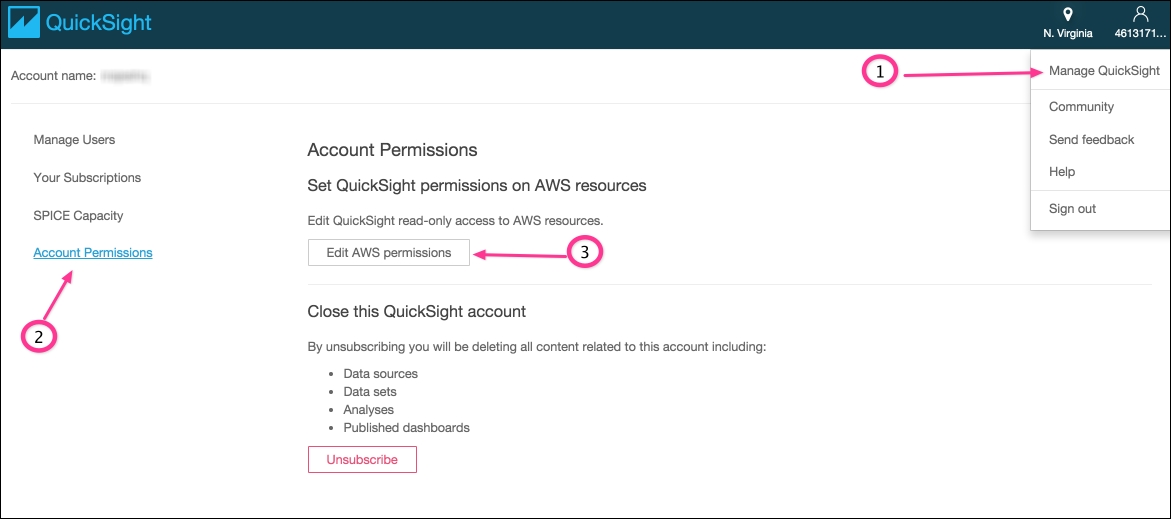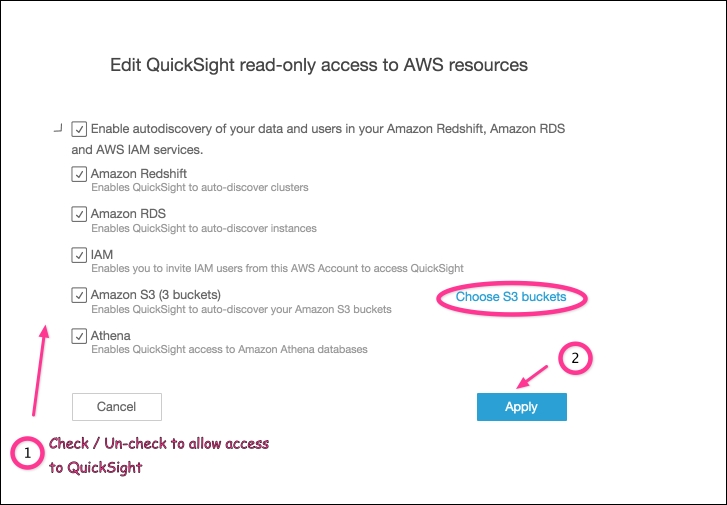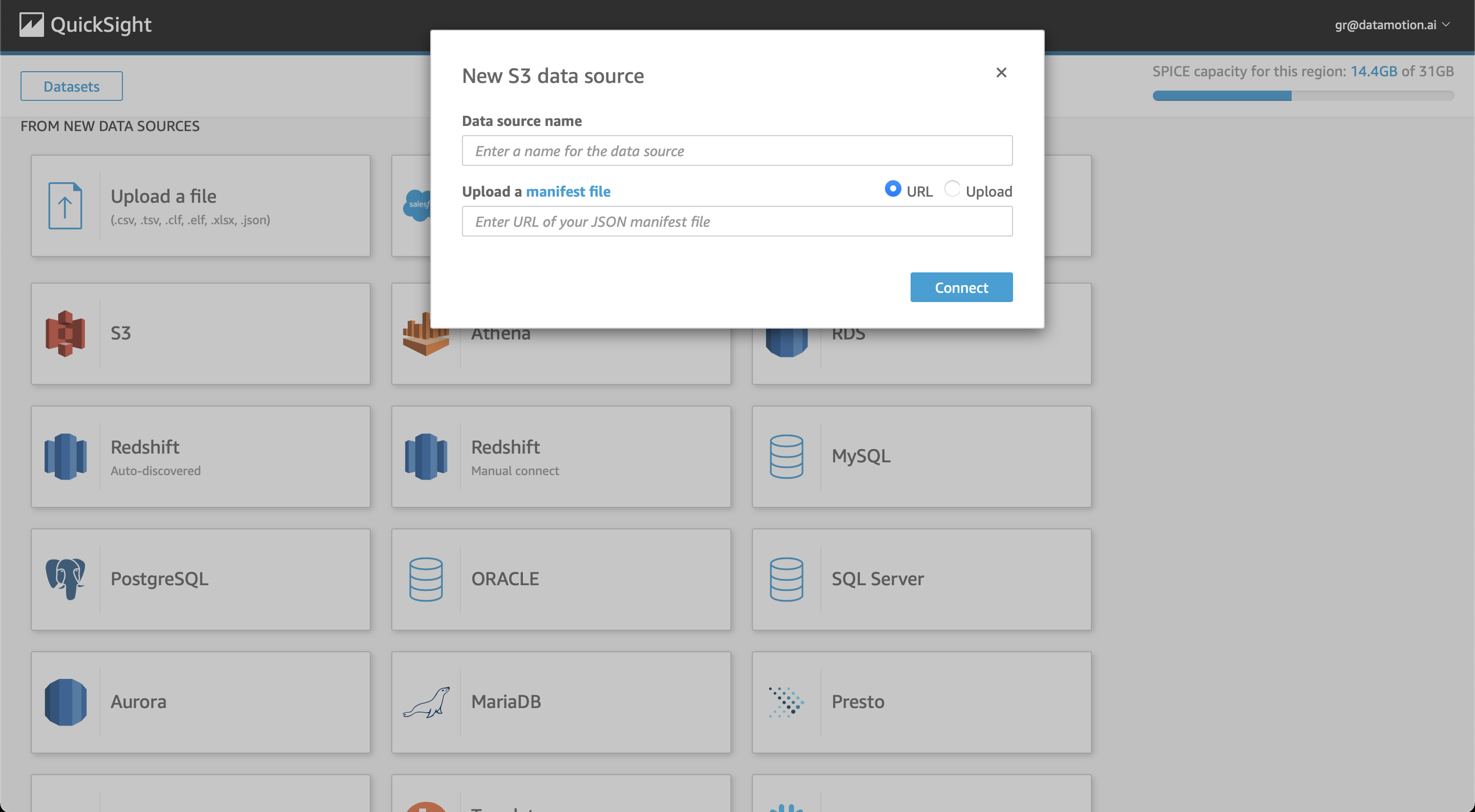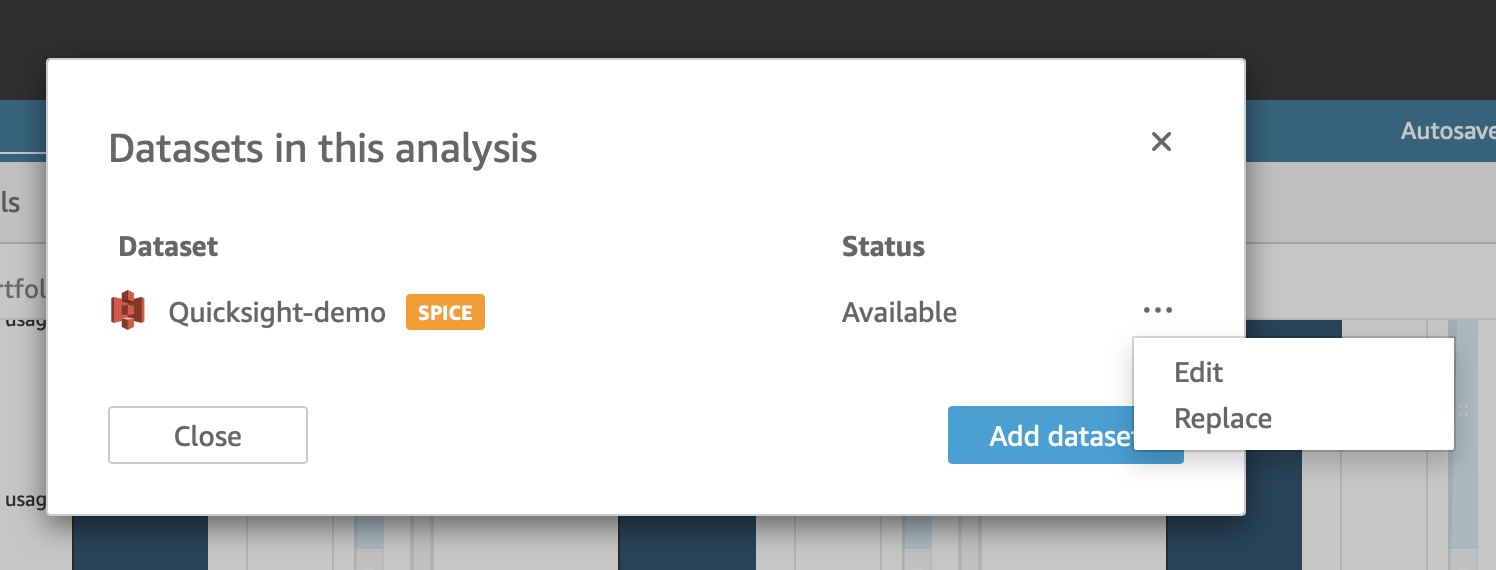Quicksight - s3 import and template report connection
Create a data source
(Make a request on template report sharing)
[AWS documentation] (https://docs.aws.amazon.com/quicksight/latest/user/create-a-data-set-s3.html)
Manifest file
Link to S3 bucket:
"URIs": [ "uri1", "uri2", "uri3" ] - for separated files
"URIPrefixes": [ "prefix1", "prefix2", "prefix3" ] - for directory with files
Documentation about manifest structure
Managing QuickSight permissions on AWS resources
You can control the permissions given to QuickSight to access your AWS resources using the following steps:
- Choose N. Virginia Region
- From the QuickSight home page, select Manage QuickSight.
- Next, click on Account Permissions from the left-hand side menu and then click on the Edit AWS permissions button as shown in the screenshot here:

- This will show Edit QuickSight read-only access to AWS resources page as shown in the next screenshot. From here, you can select Enable auto discovery of your data and users in AWS Redshift, RDS and IAM services and enable/disable access to AWS resources:

- For the S3 buckets, you can click on Choose S3 buckets and further control which buckets you want QuickSight to have access to. You will see a popup like the one shown next. If you make any changes, click on Select buckets and then Apply to preserve those changes.
- Check the box for Athena to allow...
- Return to your home region
Creating Data Source
- Datasets -> New Dataset -> S3
- Upload your manifest file

Connecting your data source to report
- Create calculated fields:


- Go to report and choose new dataset


- Check if all the graphs are connected to fields properly
Updated over 2 years ago
